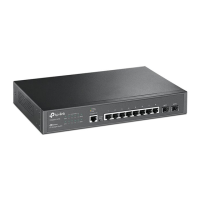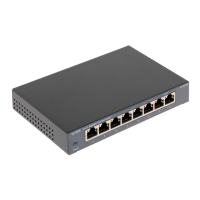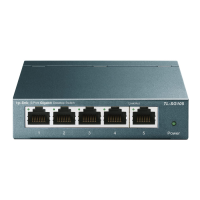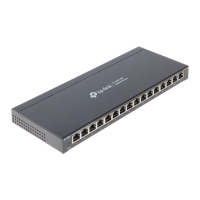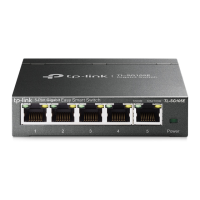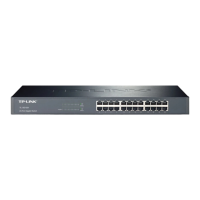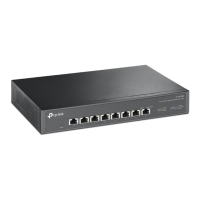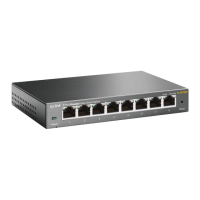User Guide 760
Configuring 802.1x 802.1x Configuration
Step 3 dot1x auth-protocol { pap | eap }
Configure the 802.1x authentication protocol.
pap: Specify the authentication protocol as PAP. If this option is selected, the 802.1x
authentication system uses EAP (Extensible Authentication Protocol) packets to exchange
information between the switch and the client. The transmission of EAP packets is
terminated at the switch and the EAP packets are converted to other protocol (such as
RADIUS) packets, and transmitted to the authentication server.
eap: Specify the authentication protocol as EAP. If this option is selected, the 802.1x
authentication system uses EAP packets to exchange information between the switch and
the client. The EAP packets with authentication data are encapsulated in the advanced
protocol (such as RADIUS) packets, and transmitted to the authentication server.
Step 4 dot1x accounting
(Optional) Enable the accounting feature.
Step 5 dot1x handshake
(Optional) Enable the Handshake feature. The Handshake feature is used to detect the
connection status between the TP-Link 802.1x Client and the switch. Please disable
Handshake feature if you are using other client softwares instead of TP-Link 802.1x Client.
Step 6 dot1x vlan-assignment
(Optional) Enable or disable the 802.1x VLAN assignment feature. 802.1x VLAN assignment
is a technology allowing the RADIUS server to send the VLAN assignment to the port when
the port is authenticated.
If the assigned VLAN does not exist on the switch, the switch will create the related VLAN
automatically, add the authenticated port to the VLAN and change the PVID based on the
assigned VLAN.
If the assigned VLAN exists on the switch, the switch will directly add the authenticated port
to the related VLAN and change the PVID instead of creating a new VLAN.
If no VLAN is supplied by the RADIUS server or if 802.1x authentication is disabled, the port
will be in its original VLAN after successful authentication.
Step 7 show dot1x global
(Optional) Verify global configurations of 802.1x.
Step 8 end
Return to privileged EXEC mode.
Step 9 copy running-config startup-config
Save the settings in the configuration file.
The following example shows how to enable 802.1x authentication, configure PAP as the
authentication method and keep other parameters as default:
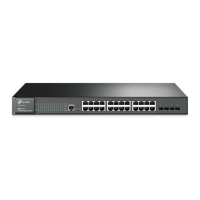
